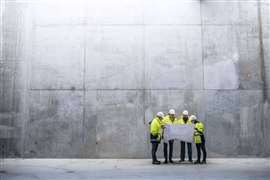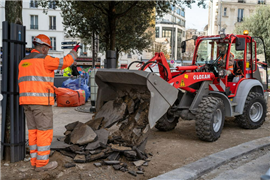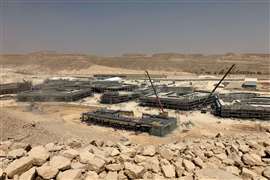Read this article in Français Deutsch Italiano Português Español
Is construction still missing a trick when it comes to crumbling infrastructure?
24 January 2024
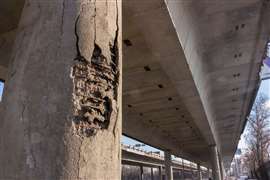 Image: maykal via AdobeStock - stock.adobe.com
Image: maykal via AdobeStock - stock.adobe.com
Andrea Bartoli, chief technology officer at Worldsensing, on why we must build resilient infrastructure
Over the past decade, more than 100 civil infrastructures have collapsed. Across the globe, ageing infrastructure is crumbling as structures reach the end of their lifespans and extreme weather events take their toll.
In the US alone, infrastructure and technology failures increased by over 800% while a tenth of the nation’s bridges have been labelled ‘structurally deficient’. In the UK, a recent report by the National Audit Office concluded the nation’s infrastructure was unprepared for the ‘acute threat’ that climate change poses to it.
A similar story can be told in developed nations across Europe. And the problem is only getting worse.
The need for robust, accurate and reliable monitoring has never been greater. So how can technology help us to build more resilient infrastructure and save lives?
The impact of ageing infrastructure
Urban infrastructure is the lynchpin of society. But ageing architecture coupled with a growing population means building integrity can be, in many cases, at risk of collapse.
The issue is only exacerbated by the growing spectre of climate change. As extreme weather events become more common, infrastructure is having to withstand conditions that it was simply not designed to stand up to.
Extreme heat can lead to buckling, increased freeze-thaw cycles can cause materials to fail and rising flood risks can mean previously safe structures become overwhelmed.
From dams and railroads to bridges and viaducts, when infrastructure fails lives are put at risk and billions of dollars’ worth of vital assets are lost.
Investing in resilience by monitoring the integrity of our structures is critical to avoiding future failures.
Yet, despite its importance, sectors of our industry are slow in embracing new technology and automating their systems. Instead, many continue to rely on outdated monitoring that relies on deploying civil engineers to identify risks in person.
This reactive approach is limited. But new technology is enabling a shift towards proactive, continuous, automated monitoring that identifies emerging issues before they even occur.
Digitising infrastructure safety
You can’t prevent what you don’t monitor. Thankfully modern advancements mean we now have the power to effectively monitor even our most remote infrastructure, collecting data that provides invaluable insight and crucially, can help to prevent future failures.
It’s all powered by digitalisation. The Internet of Things (IoT) technology is bringing large-scale infrastructure to life by enabling us to continuously monitor the stresses and strains that it experiences.
No longer do you have to send out engineers to monitor structures or complete spot checks. Instead, modern technology, like vibration meters, enables us to collect data in real-time using connected and low-power embedded sensors. This data can then be automatically uploaded to the cloud where it can be remotely monitored around the clock.
Considering that something like vibration analysis would previously require engineers to place accurate seismic sensors in the fields, collect all the raw data, return to the office, convert the data into ground motion and analyse all the information, this is a game-changer for infrastructure.
It enables civil engineers to monitor any architecture anywhere in the world at any time. Not only can it help us spot potential failures, but it can also lower costs, reduce operational burdens, aid regulatory compliance and provide an edge when it comes to winning bids.
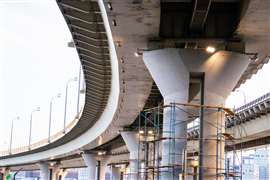 Repair work on a bridge support column (Image: Наталья Удалова via AdobeStock - stock.adobe.com)
Repair work on a bridge support column (Image: Наталья Удалова via AdobeStock - stock.adobe.com)
Prevention is key
While there are undoubted benefits to the bottom line, the true value of IoT monitoring is that it can save lives. Engineers can now, for example, use tools such as tiltmeters and vibration meters to detect early faults in infrastructures, replacing manual measurement with uninterrupted data and anomaly detection.
We’ve seen the life-saving potential of this technology first-hand as tiltmeters were able
to prevent casualties in a bridge collapse in Johor, Malaysia.
On the day of the incident, two devices detected movement in the bridge triggering an automated alert. This warning was then picked up by a team of expert operators who monitored the situation remotely and contacted local authorities to evacuate the area and immediately close the road leading to the bridge. As the data had suggested, a 25-metre-long section of the road and bridge had collapsed, but thankfully casualties had been avoided due to the automated early warning.
This is just one real-world example of how investing in resilience and IoT technology can help to safeguard against major infrastructure failure. Whether it’s bridge collapses, train derailments or mining disasters – future-proofing infrastructure monitoring can de-risk projects and increase safety.
Protecting environments (and economies)
These new technologies won’t just help us to save lives and prevent incidents, they also help to protect our environment. By averting failures, construction and wider civil engineering projects can become more sustainable as maintenance can be managed over time.
There’s also an economic consideration at play here. Infrastructure failures cost billions in damage and compensation. The current numbers are eye-watering, but even they might soon be eclipsed with experts predicting that nearly US$1 trillion of assets are at risk from climate impact within the next five years. Monitoring provides a cost-effective solution to help prevent these costs, which means that every dollar spent on resilience can pay dividends in the future.
Building for the future
Whether it’s climate change, population growth or projects reaching the end of their natural lifespan – the world faces a number of infrastructure challenges. The cost of failure is unimaginable. But by unlocking the potential of new technology and IoT devices we can help to prevent incidents before they even occur – a form of resilience that’s good for people, projects, and our planet.
Andrea Bartoli is chief technology officer at Worldsensing.
STAY CONNECTED


Receive the information you need when you need it through our world-leading magazines, newsletters and daily briefings.
CONNECT WITH THE TEAM









